Zen thought is rife with the theme of interconnectedness, sometimes called dependent co-origination. The basic idea is that everything in the world arises together and only exists together through a delicate balance of certain causes and conditions. As any one thing changes, so does everything else in the world. Perhaps the most famous metaphor in Buddhist thought for this idea is Indra’s Net. Francis Harold Cook, in his book
Hua-Yen Buddhism: the Jewel Net of Indra, describes the net as follows:

Indra's Net - Copyright Gail Atkins
"Far away in the heavenly abode of the great god Indra, there is a wonderful net which has been hung by some cunning artificer in such a manner that it stretches out infinitely in all directions. In accordance with the extravagant tastes of deities, the artificer has hung a single glittering jewel in each "eye" of the net, and since the net itself is infinite in dimension, the jewels are infinite in number. There hang the jewels, glittering "like" stars in the first magnitude, a wonderful sight to behold. If we now arbitrarily select one of these jewels for inspection and look closely at it, we will discover that in its polished surface there are reflected all the other jewels in the net, infinite in number. Not only that, but each of the jewels reflected in this one jewel is also reflecting all the other jewels, so that there is an infinite reflecting process occurring."
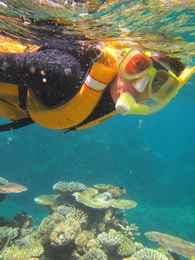
Neda on the reef
Enter the Great Barrier Reef. Composed of billions of tiny organisms called coral polyps, the reef is the largest single structure made by living organisms and the only one
that can be seen from space. As Neda & I swam through the reef and witnessed its dazzling hues, it occurred to us that it is a living embodiment of Indra’s jeweled net. Literally billions of animals swim in an intricate dance that is both awe-inspiring and yet also extremely delicate. It took millions of years for the reef system to form - for the net to be woven as it were. But current threats to the reef show us that just a few of the jewels breaking are enough to make them all stop shining.
The threats are numerous. Shipping traffic over the reef is quite high and accidents occur too often. The last major accident was in 2010 when the Chinese bulk coal carrier Shen Neng 1 was traveling outside the regulated shipping lane and struck the reef, scraping along its surface and creating a
3 kilometer scar where no marine life lives anymore.
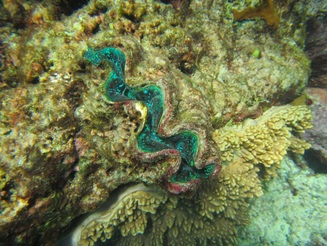
A beautiful giant clam
With the Australian economy booming from coal exports sent to support China’s voracious industrial machine, shipping accidents will only increase. The Australia coal industry has plans to build another 9 coal ports along the Australian coast, increasing even further the traffic passing through the reef. Many of these ships use a chemical called Tributyltin, which preserves the condition of ship hulls, but is toxic to the sea life it touches. The increased traffic will also increase the oil spills that occur on the reef – there have already been 283 spills on the reef since 1987.
Global warming is another threat to the reef that is already occurring. Warming waters are killing off the algae that populate the coral (which are what give the reef its vibrant colors). As one might expect from the Indra’s net analogy, the damage to the algae results in the death of the animals that use it as their food source and so on down the food chain until all that is left are “bleached” corals devoid of color and of life.
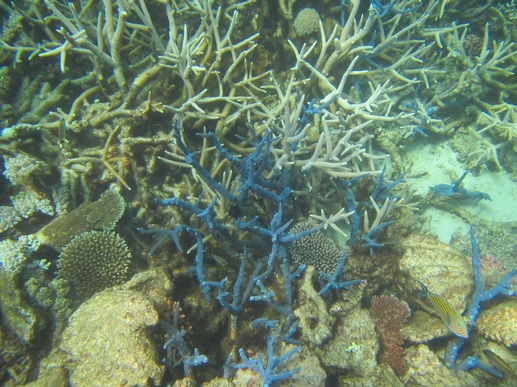
bleached corals?
The most iminent threat comes from the burgeoning numbers of Crown of Thorns starfish attacking the reef. These bad boys latch onto coral and eat its tissue. A high enough concentration and whole sections of the reef can be rendered lifeless. The high numbers of the starfish are believed to stem from the agricultural run-off in the area feeding the algae that the Crown of Thorns starfish eat.
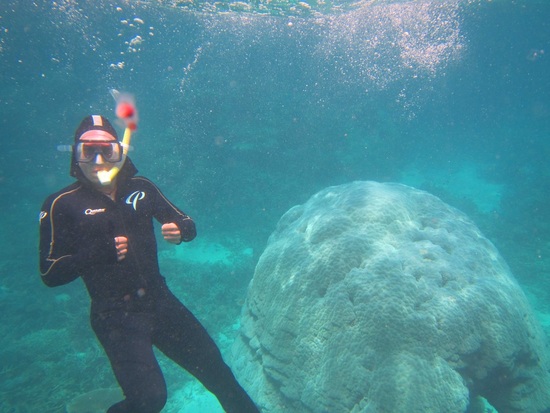
Jeff with a 3,000 year old "boulder coral". These guys take hundreds of years to build each subsequent layer...
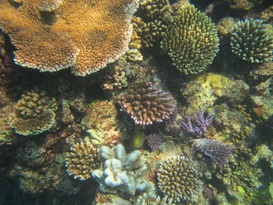
All in all, I know this paints a grim picture for the reef and is perhaps a rather sad illustration of Indra’s net. Experts seem to believe that it is quite possible the reef will only be a natural wonder enjoyed by the next generation or two humans before becoming part of the history books. According to a 2012 study by the National Academy of Science, since 1985, the Great Barrier Reef has lost more than half of its corals with two-thirds of the lost occurring
from 1998 due to everything discussed above. But that doesn’t mean there isn’t something you can do, regardless of the odds. For more information on positive change you can make,
click here.
Indra’s net is a powerful concept that can be explored at multiple levels. The ecological example of the reef proves how interconnected our lives are with the billions of lives that surround us. Perhaps you can’t singlehandedly save the reef, but think about how you can apply the analogy to other parts of your life. You are a jewel in the net, reflecting outward to all the other jewels. Perhaps the
smile you give a stranger changes her day for the better and affects her husband, kids, co-workers, etc… In what other ways can you spread light through the net instead of watching as the darkness comes?




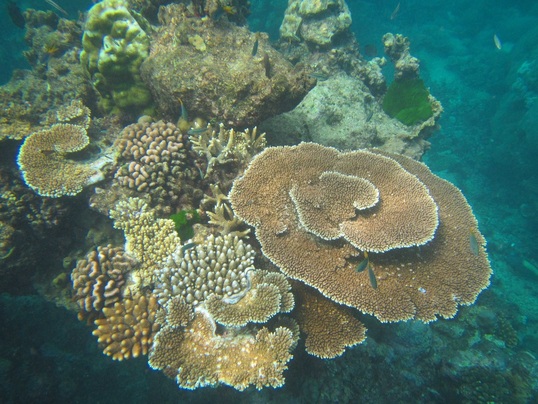
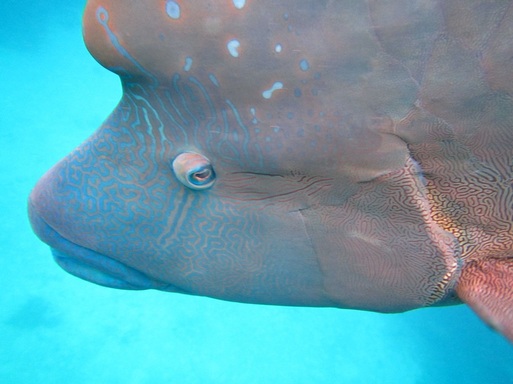


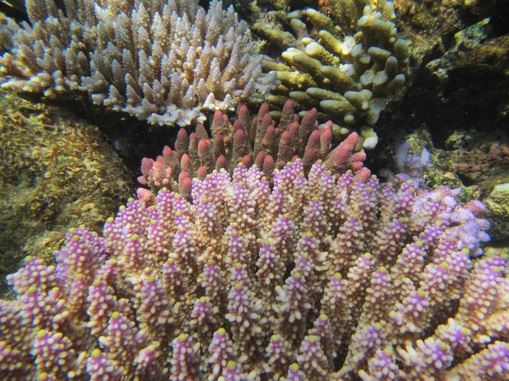
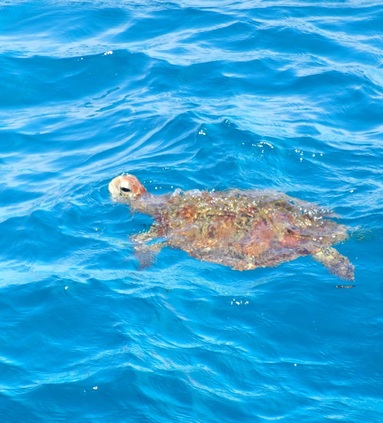
 RSS Feed
RSS Feed
